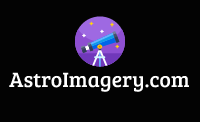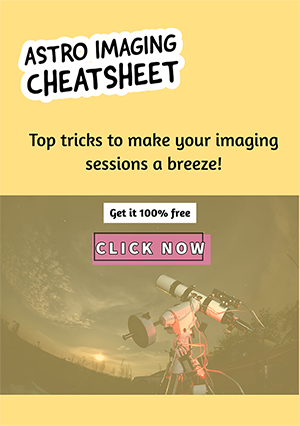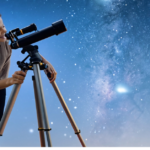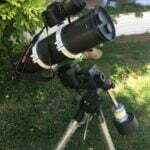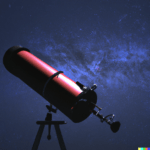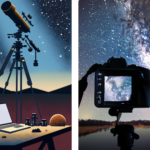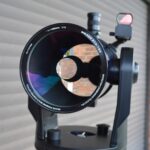Table of Contents
Astrophotography is an art that captures the wonders of our universe in all its splendour. To do this, one needs patience, skill, and the right equipment—not to mention plenty of creative talent! In this article, we’ll focus on several outstanding astrophotographers, including Adam Block, Cuiv the Lazy Geek on YouTube, and Alyn Wallace. Please note that these are some of my favourites, in no particular order.
If others hadn’t inspired me, I wouldn’t be pursuing astrophotography today. So, I am listing in this post some of the current astrophotographers who have motivated and inspired me, and I will also mention some of the famous astrophotographers from the past who have become big names because of their many achievements in the field of astronomy.
First, let’s start with three well-known astrophotographers from the present who have inspired me on my journey.
Adam Block
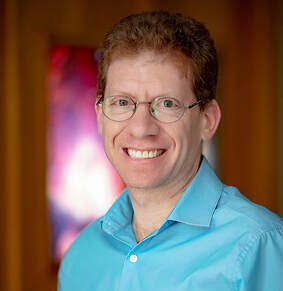
His remarkable work has garnered recognition across the globe, with his images frequently selected for the Astronomy Picture of the Day by NASA. A master of capturing the night sky, Adam Block’s journey in astrophotography continues to inspire those peering into the cosmos, hoping to grasp something beyond human understanding.
Adam Block’s Background:
- He has been fascinated with the stars and with astronomy since his childhood.
- Adam graduated with a B.S. in physics from the University of Arizona.
- He pioneered the Mount Lemmon SkyCenter’s public programme (see below).
- Adam Block is a Tucson-based astrophotographer who’s been photographing the night sky since 2001.
Mount Lemmon SkyCenter’s public programme offers people a chance to get involved in astronomy and astrophotography through hands-on activities. Participants can use telescopes to view objects, join workshops and talks, and take part in guided tours of the night sky with knowledgeable guides. This initiative aims to educate and provide engaging experiences in astronomy for all ages and backgrounds. Adam Block has been a huge part of this important project.
I recently contacted Adam and asked him the following questions:
In your opinion, why is astrophotography important?
This is what Adam said:
Astrophotography is a means to capture and appreciate the world around us. As is often said, all of our concerns here on Earth are certainly important to us… but as part of the greater realms of things, everything that we are, is a very very small part of a very large Universe. Looking to the sky enables us face the great expanses of space and time that we were born into and get to experience briefly. Astrophotography leans into this sentiment and allows us to deeply admire the sublime beauty of everything else.
What are the most important skills an astrophotographer needs?
Problem solving is a big part of this hobby and unfortunately there are no shortcuts. Buying the most expensive equipment does not necessarily mean problems are minimized (it just means there are different kinds of problems).
An astrophotographer needs to learn how cameras work, how data is calibrated and how the numbers in the data are treated to achieve a compelling image that can be shared or enjoyed. Above all it takes a combination of practice, patience, and perseverance to find a measure of success in astrophotography.
Adam Block, 2024.
Adam Block’s Contributions to Astrophotography:
- He is teaching others about the wonders of the universe.
- He is a go-to expert and educator in astrophotography.
- Adam Block guides countless individuals across the world to discover more about the Cosmos.
- His involvement with the Mount Lemmon SkyCenter’s public programme has raised awareness of astronomy.
Adam Block’s Notable Works:
- Images frequently selected for the Astronomy Picture of the Day by NASA
- Master of capturing the night sky’s beauty
- Inspires those peering into the cosmos, seeking to grasp the mysteries beyond human understanding
His stunning images of deep space objects such as nebulas and galaxies have been featured in National Geographic and Astronomy Magazine, making him an acclaimed astrophotographer with many admirers.
Check out this link to Adam Block’s gallery of astrophotography images, including nebulae, galaxies, star clusters, and objects in the Solar System.
When photographing these celestial bodies with a 32-inch telescope, Adam often produces images that are truly out-of-this-world, with vibrant colours and intricate details that breathe life into the universe.
Adam Block has also created some excellent astrophotography resources, in particular tutorials on post-processing, which I found very helpful. Here is a link to some of his Pixinsight tutorials.
Here is one of his images that I really like:
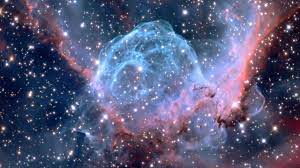
Cuiv the Lazy Geek
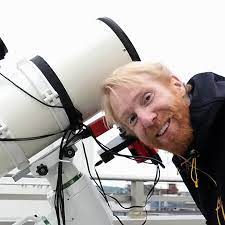
Cuiv the Lazy Geek is a well-known astrophotography YouTuber from France who creates educational and entertaining videos. His passion lies in teaching viewers how to capture stunning images of the night sky with a DSLR camera and telescope, showcasing planets, nebulas, and galaxies. Cuiv’s videos make great resources for anyone interested in astrophotography as he simplifies the process so anyone can understand it.
There are a couple of reasons why I have included Cuiv here (real name Yannick Dutertre). The first is that I love his youtube videos. He is a real geek but knows how to explain complex information and I have gained so much from watching some of his videos in the past. The second reason is that I have been able to communicate with him by email and he has always been very approachable and very helpful.
If you need to find out about NINA, he is a great source of information on that amongst many other topics including the length of exposures and imaging in a city environment with high light pollution levels as he lives in Tokyo.
So if you haven’t watched any of his videos, I suggest you do.
Alyn Wallace
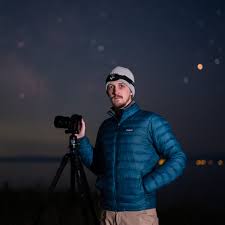
Background
Alyn Wallace is a Welsh astrophotographer and YouTuber who has been documenting the night sky for over a decade.
Alyn Wallace’s Contributions to Astrophotography:
He’s famous for his stunning images of the Milky Way and for captivating time-lapse videos. He is also a master of landscape astrophotography.
Alyn often travels to remote locations to capture night sky images, sharing his expertise with others through informative yet entertaining videos that aim to empower viewers to capture the breathtaking beauty of their night skies. Check out his YouTube channel here.
One of his most important contributions to astrophotography is the way he educates others via YouTube and through the publications he has made. He is one of many modern astrophotographers who have raised awareness of this as both a scientific and creative pastime.
His attention to detail has inspired many would-be photographers to grab a camera and shoot the Milky Way or celestial objects such as the moon, planets, comets, and more against a natural backdrop.
I really enjoyed his videos, especially when I was new to astrophotography, but his images are absolutely sublime and very inspiring! He’s also a fellow Brit who spends a great deal of time in Turkey, just like I do!
To see some of the many Milky Way shots and other work that has made Alyn famous, check out the gallery on his website here. Here’s one I’ve chosen one of my favourites:
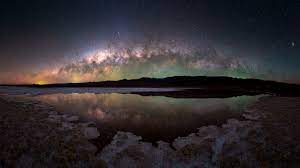
Damian Peach
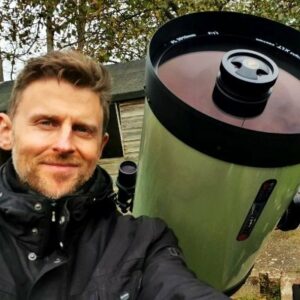
Damian Peach is a British astrophotographer known for his high-resolution images of planets, particularly Jupiter and Saturn.
His passion for stellar photography has brought us breathtaking glimpses of distant planets. With a keen focus on Jupiter and Saturn, Damian has masterfully captured the essence of these celestial objects, propelling him into the limelight as one of the world’s leading figures in astrophotography.
Damian’s contributions extend far beyond his incredible portfolio. His devotion to the craft and his commitment to share his passion with the world are what truly set him apart. He has made educating budding photographers a vital part of his mission, often conducting workshops, webinars, and online tutorials to help them navigate the intriguing world of astrophotography.
Damian Peach’s Background:
- He discovered his first telescope at the age of 11
- Instantly captivated by the cosmos
- He devoted time and energy to understanding and capturing celestial bodies
- He started his adventure with simple gear, gradually upgrading to high-end equipment
Contributions to the Field:
- Revolutionary deep-sky astrophotography
- He has inspired would-be astrophotographers
- His images have featured in international exhibitions
- He has won many awards, including the Sir Patrick Moore Prize for Best Newcomer from the British Astronomical Association
Damian Peach’s Notable Works:
- Stunning DSLR astrophotography
- Educating budding astrophotographers
- He conducts workshops, webinars, and online tutorials in astrophotography
Check out some of Damian Peach’s best work here.
Other famous astrophotographers include:
- Jerry Lodriguss is a former sports photographer who now specialises in astrophotography, particularly images of deep-sky objects.
- Russell Croman is an engineer by profession and an astrophotographer by passion, known for his wide-field images of the night sky.
5 Famous Astrophotographers from the Past
Edwin Hubble (1889–1953) was an American astronomer famous for his discoveries in extragalactic astronomy. He was the first person to prove that galaxies exist outside our own galaxy and that the universe is expanding.
It is surprising to learn that in the last 50–100 years, we have moved from the belief that the Milky Way was the only galaxy that existed to the knowledge that our galaxy is just one of the billions out there in the universe! It’s thanks to Edwin Hubble and many other famous astrophotographers and astronomers that we now know this to be true.
Before Hubble’s discoveries, most scientists believed the universe was stationary, but he showed how other galaxies and objects in space are moving away from us.
Clyde Tombaugh (1906–1997): an American astronomer who discovered Pluto in 1930 and made significant contributions to the search for a ninth planet and the discovery of several asteroids. He also discovered new clusters of stars and some galaxies. His contribution to astronomy is, therefore, quite important.
Annie Jump Cannon (1863–1941): She was an American astronomer who developed the Harvard Classification Scheme, a system for classifying stars based on their spectral characteristics. She was the first woman to receive an honorary degree from Oxford University.
George Ellery Hale (1868-1938): American astronomer who played an integral role in developing astrophotography. He founded both Yerkes Observatory and Mount Wilson Observatory, both essential institutions in furthering our comprehension of the universe.
Caroline Herschel (1750–1848) was a German-born British astronomer who made significant advances in observational astronomy. She discovered several comets and became the first woman to receive a salary for her work as an astronomer.
Major Contributions by Other Famous Astrophotographers
David Malin (born 1941):
- Pioneer in astrophotography techniques, including colour enhancement.
- Influential in popularising astrophotography through stunning images.
Alan Dyer (born 1953):
- Expert in time-lapse astrophotography, capturing the motion of celestial objects against the night sky.
- Advocate for astrophotography as a tool for public engagement and scientific communication.
Robert Gendler (born 1957):
- Expert in deep-sky astrophotography and image processing.
- Known for producing detailed and captivating images of galaxies and nebulae.
Sara Wager (born 1966):
- She is notable for her contributions to planetary astrophotography, capturing detailed images of planets and moons.
- Mentor many aspiring planetary astrophotographers through workshops and online resources.
Chris Cook (born 1968):
- Leader in solar astrophotography, capturing intricate details of the sun’s surface.
- Contributor to scientific research on solar phenomena through imaging.
Rogelio Bernal Andreo (born 1969):
- Master of wide-field astrophotography, capturing stunning landscapes with celestial objects.
- Innovator in blending artistry with scientific accuracy in astrophotography.
Babak Tafreshi (Born: 1978):
- Renowned for his work in nightscape astrophotography, blending celestial objects with terrestrial landscapes.
- Founder of The World at Night (TWAN), promoting awareness of light pollution and dark sky preservation.
So what does it take to become an astrophotographer?
Has reading about famous astrophotographers inspired you? Are you thinking of starting astrophotography? Or are you wondering if you’ve got what it takes to succeed in this field.
What kind of astrophotography are you interested in? I love deep sky photography, but you might prefer something else. The first step to becoming an astrophotographer is to decide what your focus is. What objects do you want to photograph?
In my experience doing astrophotography throughout the year for several years now, I know what it takes to become an astrophotographer. Not everybody has the inclination, skillset, or capability to succeed in this field of astronomy. At first, I didn’t know if I had the required skills and character, but now I’m sure I do.
First, you’ll need to be interested in learning about the universe and the objects in the night sky. You’ll need to be scientific in your approach yet creative and imaginative to manage aspects like post-processing or composing photographs that will catch the eye. You’ll need to understand basic mathematics to cope with the many technical aspects of photography and astrophotography settings.
You’ll definitely need problem-solving and experimental skills. This is very much a practical hobby based on theory. You’ll need dedication and be up to the challenge to constantly improve.
You’ll need an artistic eye, or your images will be dull and boring. You’ll need to bring your data to life in glorious colours that inspire others.
I think we need a sense of awe and wonder in our imaginations to contemplate the deeper questions and meaning of what we do as astrophotographers.
Motivation is key for an astrophotographer because you require patience and a lot of time and effort to produce each image, often the result of waiting for good conditions and staying up all night to photograph details you can’t see hundreds and hundreds of times over. After this, you’ll need to learn how to bring your data to life using software on your computer.
I use Photoshop to process my images. This is great software that will improve your images no end. Here’s a great deal to get it:
I’d like to end this by thanking all you astrophotographers out there and those of you who read this and aspire to become one. Good luck! Go for it!
